The Things You Should Basically Know About Animals
A boy can easily hold more than a thousand animals in one hand. He can do this by holding a spoon of water from a pond. In the water are many tiny animals too small to see without a microscope. The largest animal on earth is the blue whale which can grow to a length of over 100 feet and may weigh over 100 tons. The elephant is the largest land animal. The ostrich is the largest bird.
Here are samples of animals pictured next to a man
A Whale Shark
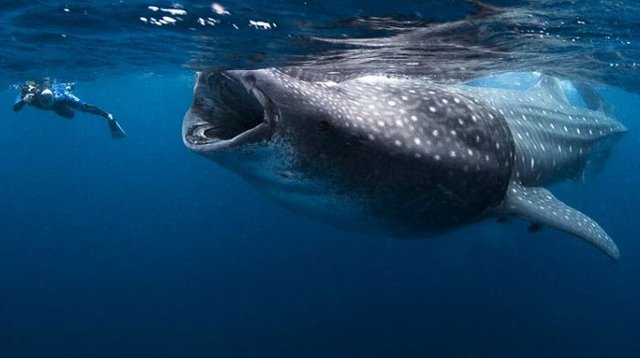
source
An Ostrich
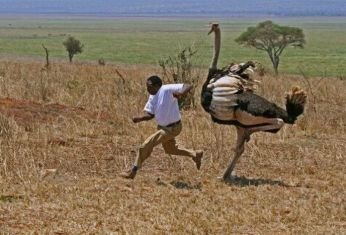
source
An Elephant
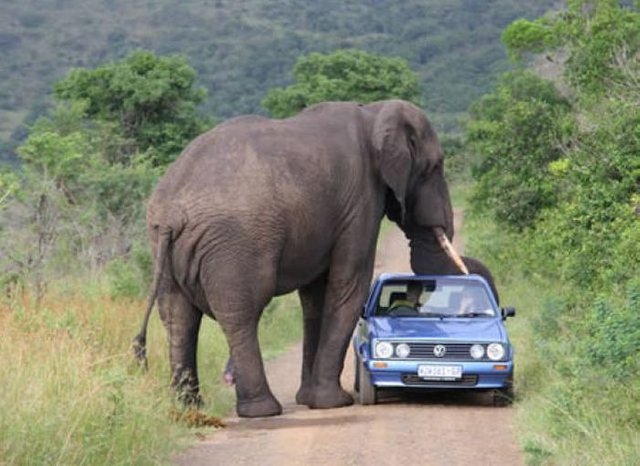
source
The tiniest and the largest animals are alike in several ways. All animals need oxygen. Some get it from the air, some from water, and others from the soil. Plants manufacture their own food, but all animals depend upon plants or other animals for their food. All animals have ways to digest food and remove waste materials. All animals can move. Even animals which attach themselves to the ocean bottom or rocks can move a little in getting food or protecting themselves.
The polar bear and the penguin like to live in cold regions. Lions and tigers make their homes in warm jungles and bush country. The elk and the squirrel live where there are both cold and warm seasons. The gila monster and the horned toad are suited to life in dry regions. The monkey and the leopard are found in forests while the zebra and the rhinoceros live on the plains.
A Polar Bear
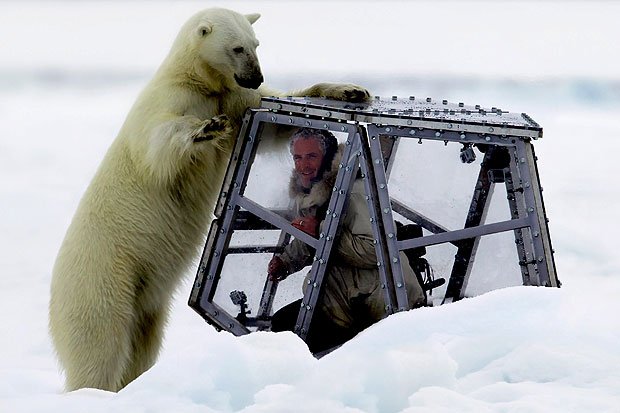
source
A Tiger
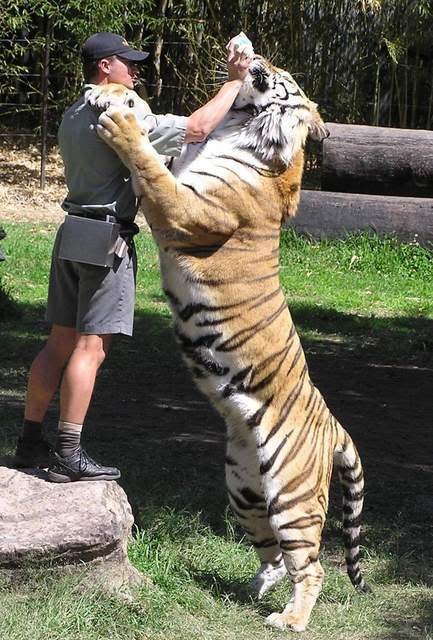
source
Animals that do not seem to be at all alike often live in the same areas. There are so many animals living in different places, and there is so much to know about them, the story of animals is long.
How Animals Are Built

source
Any one kind of animal looks different from most other animals. The housefly looks somewhat like a bird, but not at all like a porcupine or kangaroo. They are alike because they are built of the same material.
All animals, like all plants, are built mainly of a material called protoplasm. Protoplasm is arranged into cells, divided from one another by means of a partition, much as the rooms of a house are divided by walls. Food must be supplied to protoplasm in order to replace the worn-out cells and manufacture new ones. Just as in a house, repairs must be made and new rooms built to take care of new members of the family.
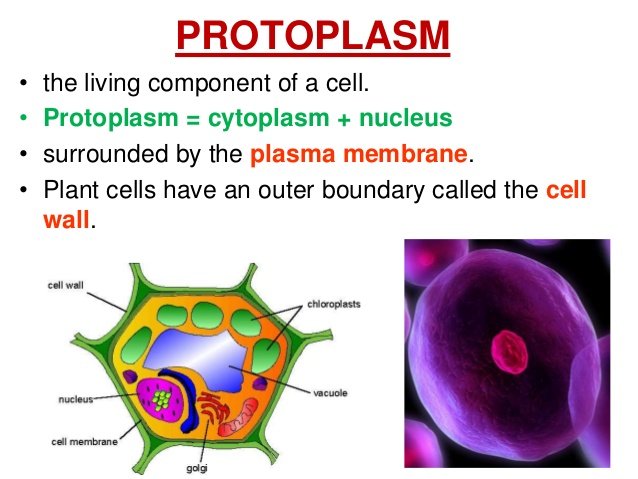
source
A few animals consist of only one tiny cell. The ameba and the paramecium are microscopic examples of one-celled animals. They belong to a group of animals called protozoa. Many scientists believe that simple one-celled animals were the first to appear on the earth.
Every cell, whether a whole animal or part of one, has a tough, jelly-like outer covering which is porous like a screen. Food and waste can pass back and forth through the pores of this elastic membrane.
Most animals are built of many cells. When the animal is made of many cells, the cells must work together in teams to more efficiently take care of the many body activities. Groups of cells working together, doing the same work are called tissues. Group of tissues working together to perform special jobs are called organs. The heart and the brain are organs made up of groups of tissues. Organs work together to form systems, such as the nervous system which carries messages and the respiratory system which exchanges oxygen and carbon dioxide.
How Animals Get Their Food
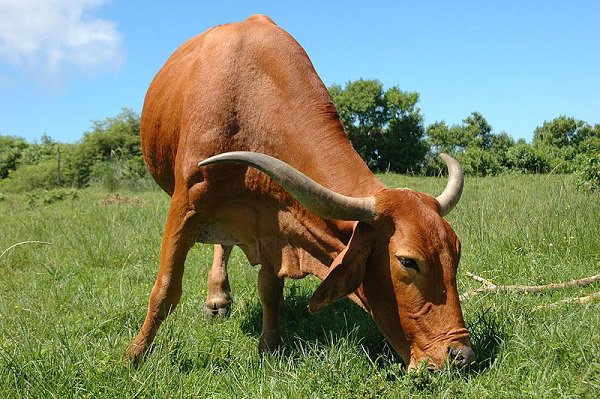
source
Unlike plants, animals are not able to manufacture the food necessary to keep them alive. Therefore, animals must eat plants or other animals that have eaten plants.
Animals get their food in many different and strange ways. The ameba wraps itself around its food and takes it into its body in a large sac called a food vacuole. The earthworm swallows soil as it burrows its way to underground and then digests the plant and animal life in the soil before passing it out of its body. The female mosquito lives on a diet of blood which it sucks through the skin of mammals. The clothes moth and cricket eat clothing as well. Both are really after the organic substances in soiled clothing.
A moth in a cloth
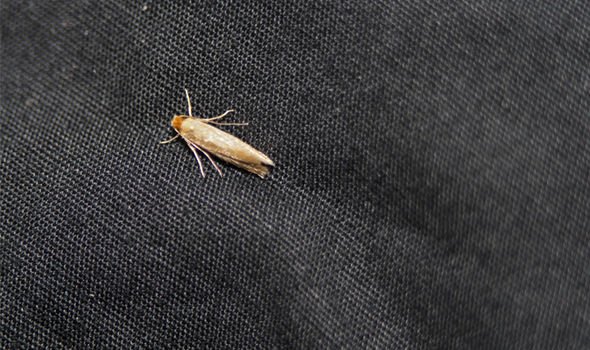
source
The bee makes its food from the perfumed nectar of flowers. It takes the nectar into its body. There it collects it, pre-digests it, and vomits it into receptacles of honeycomb at the hive to be stored for winter.
Bees in their beehive

source
Some snakes swallow small animals whole. Some poison their prey first. Toads, frogs, and salamanders eat insects, catching them with a quick flick of their long tongues. Most birds eat plant seeds and insects. The young birds usually are fed a diet of insects and later learn to eat grass and weed seeds. The beaks of birds are shaped to gather these two kinds of food.
The camel, horse, buffalo, and deer are vegetarians. They eat grass, leaves, and other soft parts of plants. The lion, tiger and wolf eat other animals. All have bodies that can spring quickly on prey after a stealthy approach. Most whales eat tiny plants and animals called algae and plankton which they strain out of the great amounts of sea water which pass through their bodies. Is it not strange that the largest of animals eats some of the smallest plants and animals?
The rhinos are also vegetarian or as classified as an herbivore.
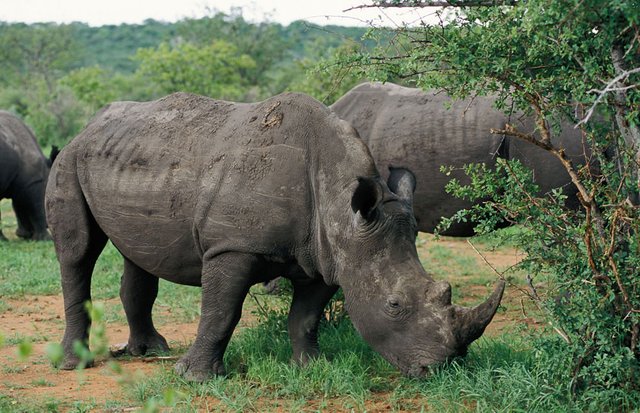
source
How Animals Digest Their Food

source
No matter how an animal gets its food, all animals must be equipped for using the food once it is in the body. Every animal must also have certain kinds of food. They must have carbohydrates, fats, and proteins. These are gotten by eating plants and other animals. The foods are broken down (digested) into simpler substances. These are used by cells to release the energy necessary for life activities such as movement or secretion.
The large pieces of raw food must be broken down into tiny molecules which can pass through the membrane of the cell and can be used by the protoplasm. Carbohydrates are broken into starches and sugars, fats into fatty acids, and proteins into amino acids. To assist in the breakdown of the food, enzymes are present in the body. These are catalysts which hurry the breakdown but do not change themselves. This process is called digestion.
The food must be burned so that energy may be released. The burning of any material requires oxygen. This process takes place in the cells of the body. The oxygen is obtained from the atmosphere. In animals like the protozoans or sponges, which have one or only a few cells, the cells are in contact with the environment and oxygen may be taken in directly. In more complex animals, there must be a special structure to circulate the oxygen throughout the body. Oxygen is taken into the body, is united chemically with the food, and energy is released. Water and carbon dioxide are removed. This process is respiration.
The building blocks of proteins, amino acids, when broken down produce the waste material ammonia. This material, produced within the protoplasm of the cell, is poisonous and must be removed at once or changed to a less poisonous form like urea. This is passed out through a special organ called nephridium or kidney. The process is excretion.
How Animals Move

source
Animals can move from one place to another. They need to move to find both food and mates, to protect themselves against their enemies, and to protect themselves when the weather is too hot or too cold.
Some ways of moving may be seen among animals which have one cell. Most of these animals live in the water. They have special devices for moving. Some larger animals move in the same way. The ameba moves by extending the protoplasm of its cell into a long foot-like projection. This is called a pseudopod. The contents of the cell flow gradually into the pseudopod and the animal moves forward.
The euglena has a single thread or whip, called a flagellum, which is attached to one end of the animal. This is lashed through the water and the animal is towed behind it. Some animals have beating cilla, which are hair-like threads of protoplasm, extending from the cell or cells.
Many animals move by means of muscles, which allow them to creep or walk on land, to swim in the water or to fly in the air. Creeping animals, like the clam, are slow in movement. They have claws, bristles or suckers which, when pushed along a fairly solid surface, create friction and allow the animal to hold to the surface.
Many land animals have jointed legs which support the body and lift it off the ground. These animals are able to move very fast. Some aquatic animals like fish, have wide, flat appendages which, when moved back and forth, act like paddles to propel the animal. Other aquatic animals, like the octopus, move by jet propulsion. Water is taken in, then forced out through an opening with great force. Bats, most birds and insects have wings which propel them through the air. Movement from one place to another is called locomotion.
Movement of an octopus
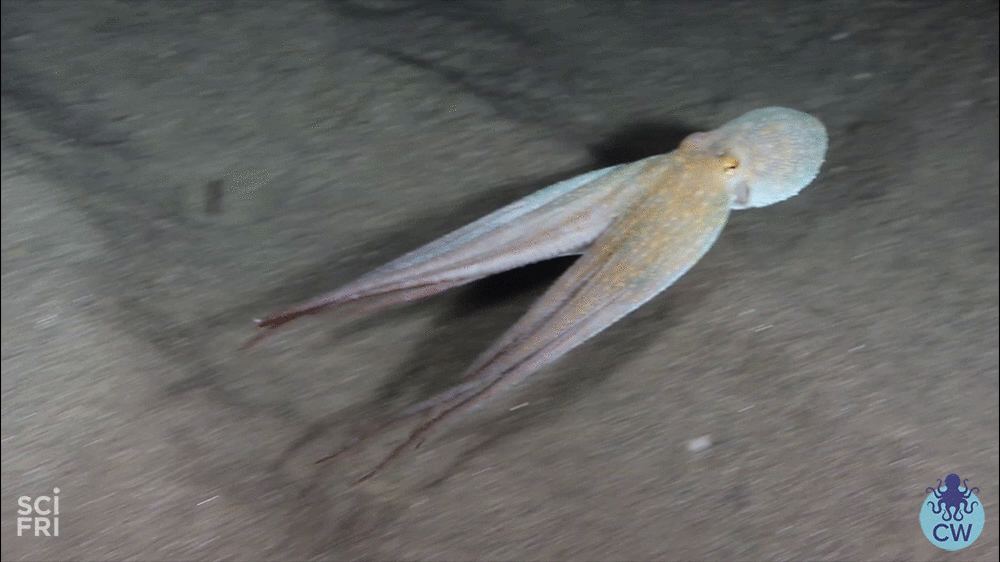
source
How Animals Protect Themselves
The way in which an animal protects itself depends upon the type of body it has, its home, its enemies and many other factors. Many specific ways by which animals protect themselves can be seen throughout the animal kingdom.
Small animals serve as food for larger animals. Both the large and small have devices, such as claws and special coloring, to protect them from their enemies.
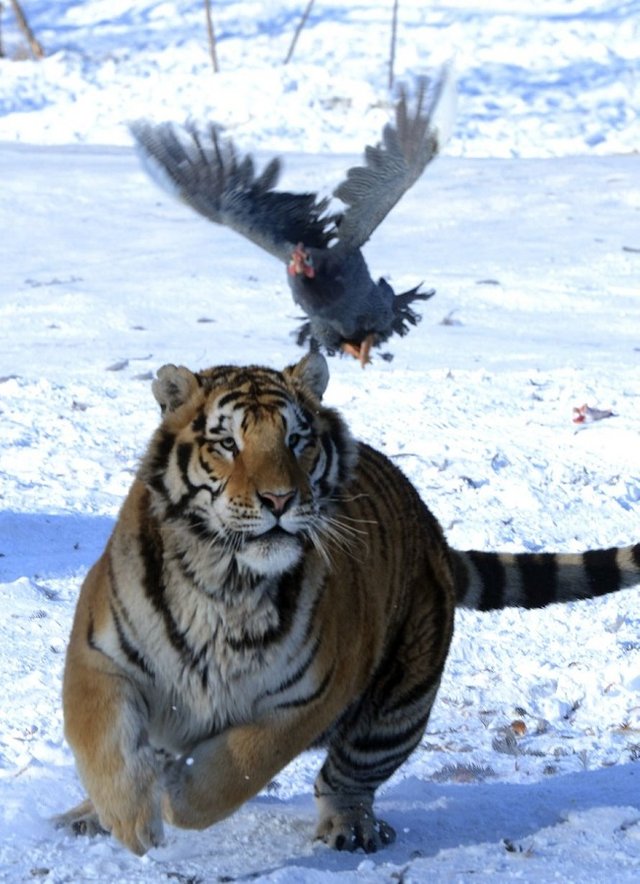
source
Animals can:
- Move quickly (bird, rabbit)
- Hide by camouflage or protective coloring (chameleon)
- Attack the enemy with special devices (tiger, bee)
- Spray bad-smelling or opaque chemicals (skunk,squid)
- Leave spiny objects in the skin of the attacking animal (porcupine)
- Migrate or hibernate to escape winter, weather (goose, frog)
- Build homes against enemies (squirrel)
The basic thing an animal can do for protection, however, is to respond to the things around it. The things it can feel, smell, hear, see, and taste tell it when it is in danger. Each animal is able to respond in some way to warnings from its surroundings, or environment, and from inside itself. The way in which it responds is different for different animals.
How Animals Reproduce

source
When a person wears a hole through the bottom of his shoes, he can bury a new pair. There are factories which make shoes, so that new ones will be ready when the old ones wear out. Animals are like shoe factories. They can always make more animals just like themselves. Animal bodies wear out or are killed. New ones must always be ready.
Animals are able to produce new individuals. This is important, not for the life of the particular animal, but for the continued life of the group of animals. Some of the one-celled animals, like the ameba, are able to produce a new individual by dividing into two parts. Other animals, like the sponge, produce large humps or buds on the body that separate and develop into new individuals. In some animal groups, there are two sexes present. The individual animals are members of either the male or the female sex or both, hermaphrodite. In each sex, there are cells specialized for producing new animals. When the male and female mate, they each contribute one or more sex cells which fuse and a new animal begins to develop. Sometimes, the cell grows inside of the female animal, just as puppies grow inside the body of the mother dog. Sometimes the animal develops outside of the female, as does the chicken, which is hatched from an egg. Production of new animals is called reproduction.

-Steemit Digest
@originalworks
The @OriginalWorks bot has determined this post by @steemitdigest to be original material and upvoted it!
To call @OriginalWorks, simply reply to any post with @originalworks or !originalworks in your message!
To nominate this post for the daily RESTEEM contest, upvote this comment!
For more information, Click Here!
that was a major national geographic episode!
well done, enjoyed it!
upvoted resteemed and followed!
Thank you for reading my post @schwelgeroy! I'll be following you too !
Congratulations! This post has been upvoted from the communal account, @minnowsupport, by steemitdigest from the Minnow Support Project. It's a witness project run by aggroed, ausbitbank, teamsteem, theprophet0, someguy123, neoxian, followbtcnews/crimsonclad, and netuoso. The goal is to help Steemit grow by supporting Minnows and creating a social network. Please find us in the Peace, Abundance, and Liberty Network (PALnet) Discord Channel. It's a completely public and open space to all members of the Steemit community who voluntarily choose to be there.
This post was resteemed by @resteembot!
Good Luck!
Curious? Check out:
The @resteembot users are a small but growing community.
Check out the other resteemed posts in resteembot's feed.
Some of them are truly great.